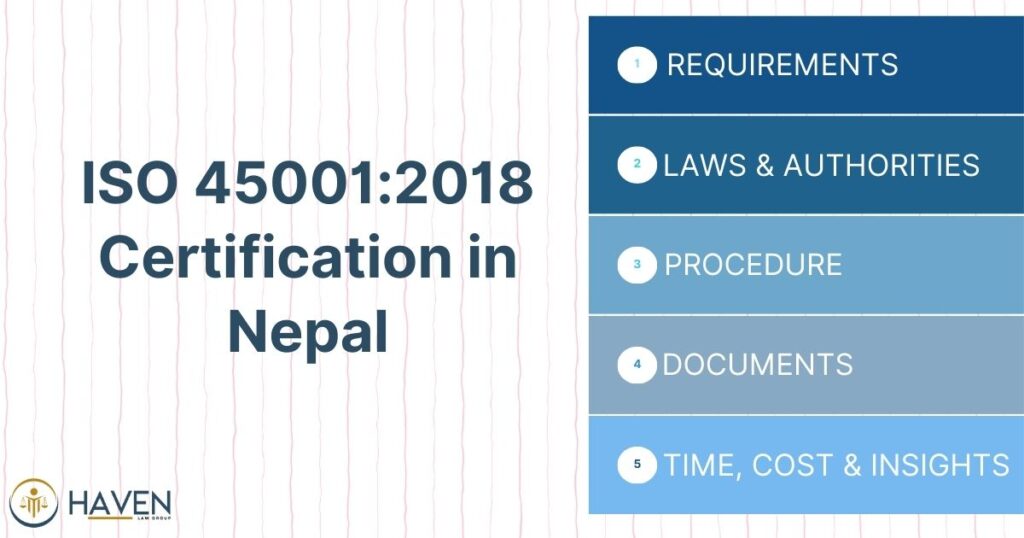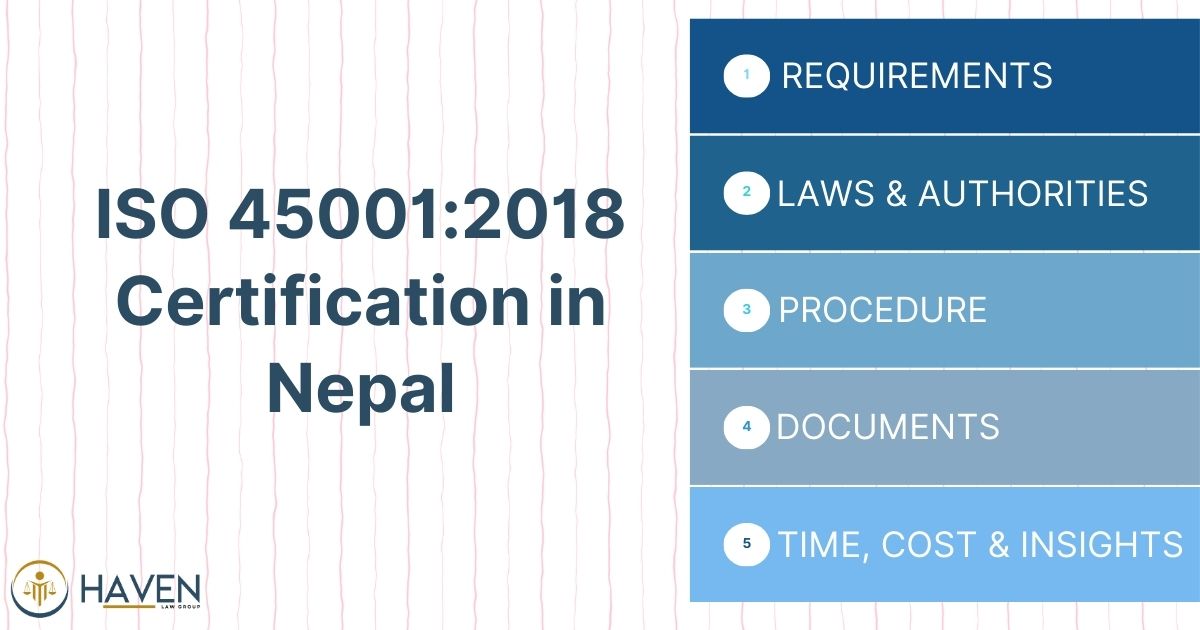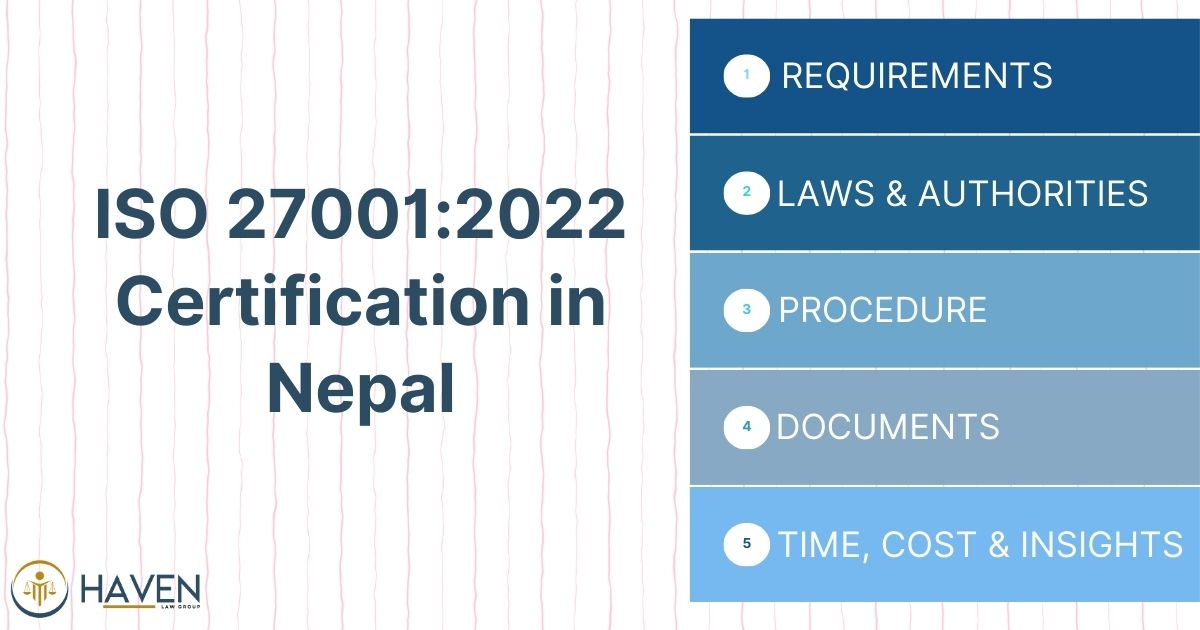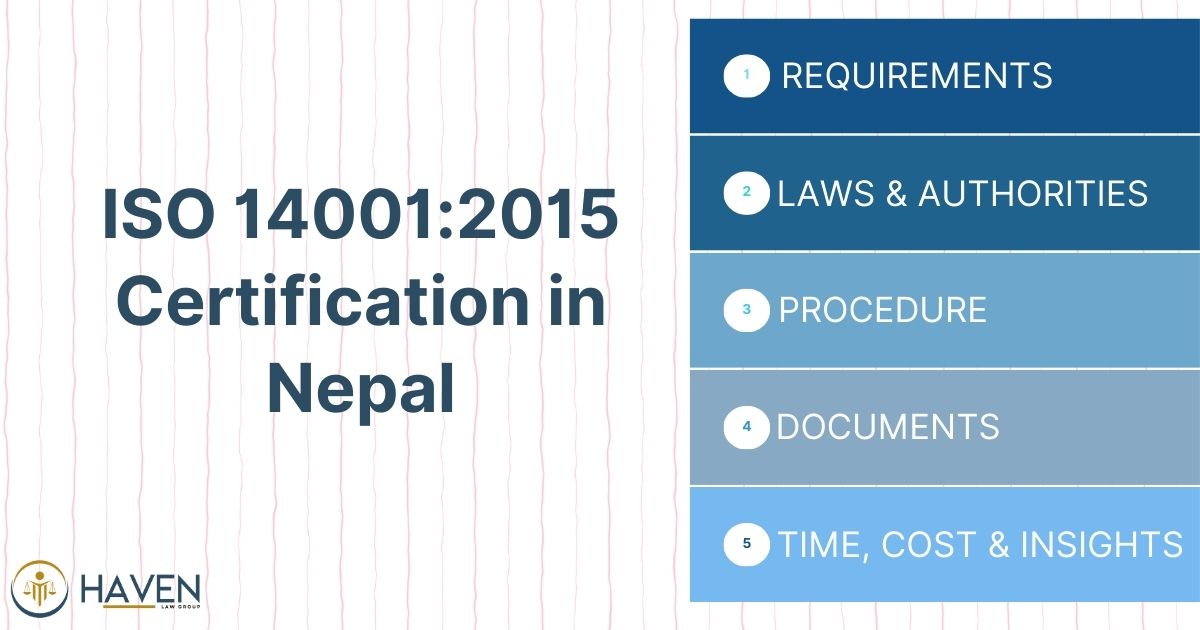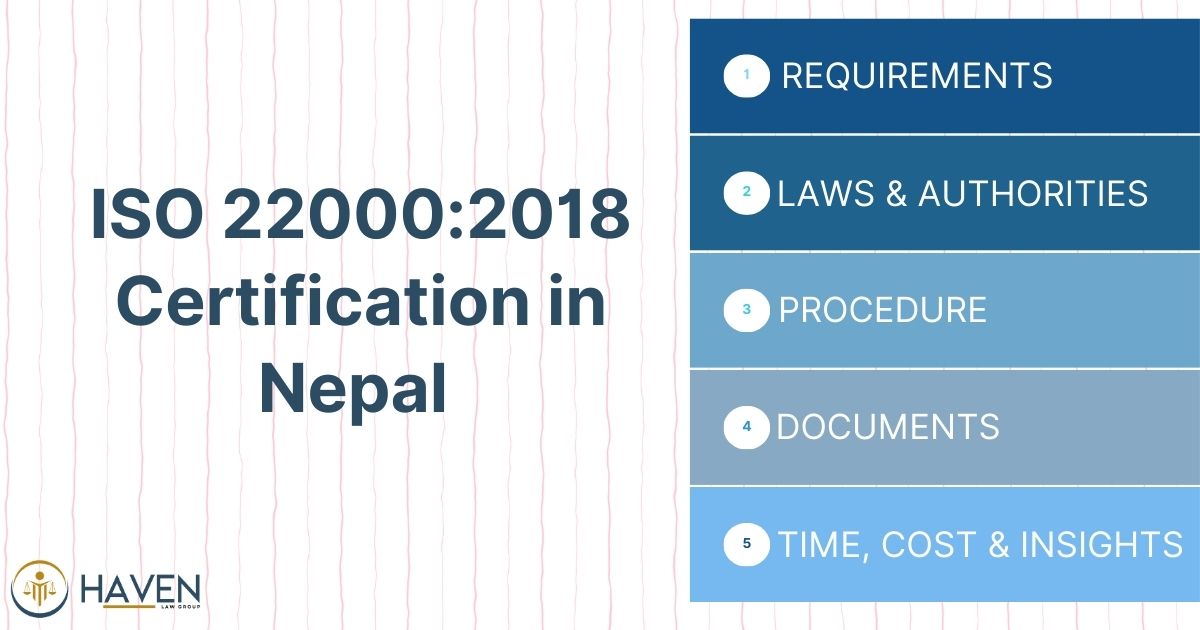Introduction
Workplace safety has become one of the most critical priorities for businesses worldwide. In Nepal, where industries like construction, hydropower, manufacturing, and services are growing rapidly, ensuring occupational health and safety (OHS) is no longer optional—it is essential. ISO 45001:2018 Certification provides a globally recognized framework that helps organizations create safer workplaces, reduce risks, and promote employee well-being.
This guide explains everything you need to know about ISO 45001:2018 Certification in Nepal, including its importance, process, documentation requirements, benefits, and how it applies to businesses across different sectors.
What is ISO 45001:2018?
ISO 45001:2018 is an international standard for occupational health and safety management systems (OHSMS) developed by the International Organization for Standardization (ISO). It provides organizations with a systematic approach to identify, control, and reduce workplace hazards while ensuring compliance with laws and improving employee safety culture.
The standard is built around the Plan-Do-Check-Act (PDCA) model and aligns with other ISO management systems like ISO 9001 (Quality Management) and ISO 14001 (Environmental Management), making integration easier for businesses.
Importance of ISO 45001 in Nepal
Nepal has experienced fast-paced industrialization, with increased activities in construction, tourism, hydropower, and manufacturing. However, these industries also bring occupational risks such as accidents, injuries, and long-term health hazards.
Key reasons why ISO 45001 is important in Nepal include:
- High-risk industries: Construction, hydropower projects, and factories face workplace hazards.
- Employee safety awareness: Growing demand for safe work conditions among employees.
- Legal requirements: Nepal’s labor laws emphasize workplace safety and compliance.
- Global trade opportunities: International clients prefer suppliers with certified safety standards.
- Reputation and trust: Certification demonstrates commitment to employee well-being and corporate responsibility.
Scope of ISO 45001 in Nepal
ISO 45001 can be applied to all types of organizations in Nepal, regardless of size or sector. Some industries where it is most relevant include:
- Construction and infrastructure projects
- Hydropower and energy companies
- Manufacturing and industrial plants
- Transportation and logistics
- Healthcare institutions
- Hotels, tourism, and hospitality
- Educational institutions
- Non-governmental organizations (NGOs)
Core Principles of ISO 45001
The ISO 45001 framework in Nepal is guided by the following principles:
- Leadership and Commitment – Management must take accountability for occupational health and safety performance.
- Employee Participation – Workers should be actively involved in safety programs and decision-making.
- Hazard Identification and Risk Assessment – Identifying risks and implementing controls before incidents occur.
- Legal and Regulatory Compliance – Aligning with Nepal’s labor and workplace safety laws.
- Continuous Improvement – Regular monitoring, audits, and corrective actions to enhance workplace safety.
- Preventive Culture – Prioritizing accident prevention rather than reacting to incidents.
Benefits of ISO 45001 Certification in Nepal
Achieving ISO 45001:2018 certification offers multiple benefits to organizations in Nepal:
1. Improved Workplace Safety
Organizations can systematically identify hazards and reduce workplace accidents and injuries.
2. Compliance with Laws
Helps businesses comply with Nepal’s Labor Act, occupational safety guidelines, and other government regulations.
3. Enhanced Productivity
Safer workplaces lead to fewer disruptions, reduced absenteeism, and higher employee morale.
4. Better Reputation
Demonstrates responsibility towards employees and builds trust with clients, investors, and stakeholders.
5. International Recognition
ISO 45001 is a global standard, making Nepali businesses more competitive in international markets.
6. Cost Reduction
Fewer workplace accidents reduce medical costs, insurance claims, and compensation expenses.
7. Employee Retention
A safe working environment enhances employee satisfaction and reduces turnover.
ISO 45001 Requirements in Nepal
Organizations seeking ISO 45001 must implement the following requirements:
- Context of the Organization – Understanding internal and external factors that impact OHS.
- Leadership and Worker Participation – Engaging employees and ensuring management commitment.
- Planning – Conducting risk assessments and setting objectives.
- Support – Allocating resources, competence, awareness, and communication.
- Operation – Implementing hazard controls and emergency preparedness.
- Performance Evaluation – Monitoring, measurement, audits, and management reviews.
- Improvement – Taking corrective actions and promoting continuous improvement.
ISO 45001 Certification Process in Nepal
The certification process usually involves the following steps:
Step 1: Gap Analysis
Identify current workplace safety practices and compare them with ISO 45001 requirements.
Step 2: Documentation
Prepare policies, procedures, and records, including:
- OHS policy and objectives
- Risk assessment reports
- Training records
- Emergency response plans
Step 3: Implementation
Apply the documented processes in daily operations and ensure compliance.
Step 4: Internal Audit
Conduct internal audits to check system effectiveness and identify improvements.
Step 5: Management Review
Top management reviews system performance and takes corrective actions.
Step 6: Certification Audit
An independent certification body conducts audits to verify compliance with ISO 45001.
Step 7: Certification
Upon successful completion, the organization is granted ISO 45001 certification.
Documentation Required for ISO 45001 in Nepal
Key documents typically required include:
- Occupational Health and Safety Policy
- Risk assessment and hazard identification reports
- Legal and regulatory compliance records
- Roles and responsibilities for OHS management
- Emergency preparedness and response plans
- Training and awareness programs
- Incident reporting and investigation procedures
- Monitoring and performance evaluation records
- Internal audit reports
- Corrective and preventive action records
Challenges in Implementing ISO 45001 in Nepal
While ISO 45001 is highly beneficial, Nepali organizations may face challenges such as:
- Limited awareness of international standards among SMEs.
- Lack of resources for training and system implementation.
- Resistance to change from employees or management.
- Complex documentation requirements for compliance.
- Coordination difficulties in industries with large workforces.
Strategies to Overcome Challenges
To successfully implement ISO 45001 in Nepal, organizations can adopt the following strategies:
- Training and Awareness Programs – Educating employees about safety benefits.
- Top Management Support – Strong leadership commitment.
- Simplified Documentation – Developing user-friendly procedures.
- Employee Engagement – Encouraging worker participation in safety decisions.
- Regular Audits – Identifying and addressing gaps early.
Integration of ISO 45001 with Other Standards
ISO 45001 is designed to integrate with other management systems, including:
- ISO 9001 (Quality Management System)
- ISO 14001 (Environmental Management System)
- ISO 22000 (Food Safety Management System)
For Nepali businesses, integrating ISO 45001 with these standards reduces duplication, saves costs, and strengthens overall organizational efficiency.
Relevance of ISO 45001 to Different Industries in Nepal
Construction
High accident rates make OHS certification vital for construction companies working on roads, bridges, and hydropower projects.
Hydropower
Nepal’s hydropower sector involves electrical hazards, working at heights, and water-related risks.
Manufacturing
Factories with heavy machinery, chemicals, and production lines benefit from structured safety systems.
Hospitality
Hotels and tourism businesses gain trust by ensuring guest and employee safety.
Healthcare
Hospitals require strict safety systems to protect staff and patients from biological and chemical hazards.
Future of ISO 45001 in Nepal
The demand for ISO 45001 certification in Nepal is expected to rise due to:
- Increasing industrialization and infrastructure development.
- Stricter government workplace safety regulations.
- International trade requirements for certified suppliers.
- Growing awareness of employee welfare and corporate responsibility.
Conclusion
ISO 45001:2018 Certification in Nepal is more than just a compliance requirement—it is a commitment to creating safer, healthier, and more productive workplaces. By adopting this standard, Nepali businesses can not only safeguard their employees but also enhance competitiveness, reputation, and long-term sustainability.
Whether you are a construction company, manufacturer, or service provider, implementing ISO 45001 ensures that your organization aligns with global safety practices while meeting local regulatory requirements.

